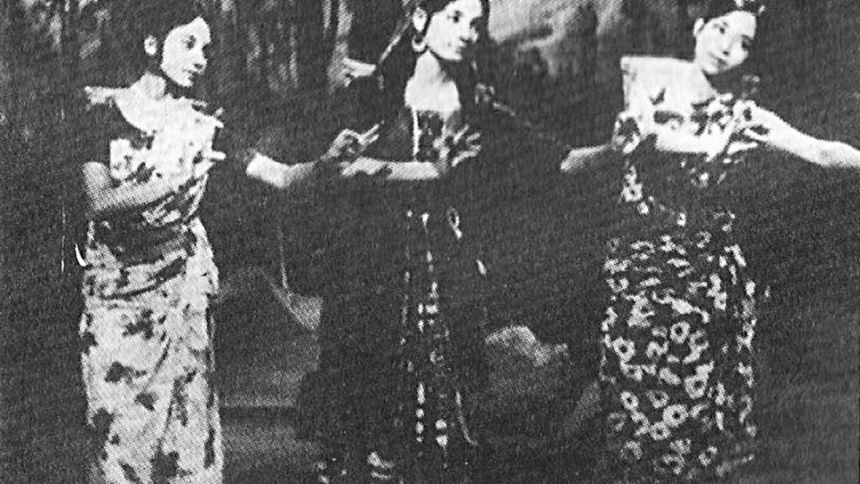Television with pleasure and rhythm

[Continued from last issue]
Barkatullah had not only made for DIT's program but also made a short documentary for a training program on BBC. Contestants from 22 countries have performed to make such documentary film. Among them Barkatullah's documentary film obtained the first place. To make this short length film Barkatullah always remembered about the limitations of both time and facilities.
In its first scene in the movie it is shown that a new born child has been born in the house. The environment has become all chaotic and loud. And amid this you can hear the baby's crying voice. Amid the chaos environment the child is growing up. The father got stuck in the crowd while buying milk for his child. While studying in school and college there were huge chaos as well. While sitting inside the bus with umbrella inside his arms he was diligently searching for jobs. After that he gets married. And then more stories about his life. Within all the scenes you can find the background sound of the daily hustle and bustle of city life and the sound of cars. The producer of the movie didn't show the name of the movie in the first scene. In the last scene of the movie he showed that after the death of the boy his body was put forward in the graveyard. After his body has been buried in dirt the camera zooms back and you can see that the graveyard is situated within the busy location of the city. Everywhere there are lots of people and the race of cars in between this scene the name of the movie appears “Crying for Silence”.
People get amazed to see the wedding video of Barkatullah and Zeenat Barkatullah. They were surprised to see how 40 years back they could make a wedding video. The reason behind that is because at that time the whole wedding ceremony was captured with a 8 millimeter camera. The reason behind the whole wedding subject is because the wedding movie is still in place with Barkatullah. Sadly the BBC award winning film cannot be found anywhere right now. Barkatullah who was well-known for being program producer and also producing solely the program “Malancha” his duty as producer of the program was handed onto Ali Imam. As Barkatullah was in broad his responsibility was shifted onto Ali Imam. Papiya Sarwar was about to give solo performance in the program. Besides singing the songs of Rabindranath, she was also ready to perform songs of D. L. Rai and Atul Prasadh. Ali Imam as the Art director, sat with the cinematographer and decided that the main attraction of the program would be showcased by the song “Papiyare Papiya”.
In order to grab people's attention he decided to use three mirrors hear the stage. It's not an easy matter to arrange 3 big mirrors for a huge studio.
But still in order to make the program best, everybody worked hard to complete the program. As the song has the lyric that Papiya will talk with another Papiya that is why three mirrors has been arranged.
The 3 mirrors were placed at such a way that the audience could not understand at first that the artist was shown through mirror. At that time the making of the scene of the song was very much appreciated.
He was always careful about the audience of television song and dance audience. That is why the producers of dance and song program were concerned to produce varieties in their programs.
The dance program with moon was made instantly. But after that Barkatullah wanted to create another dimension to dance program with the help of costumes and choreographer. The name of the show was called Jagrity. With the importance of lightning he highlighted the ballet dance in the television. The form of Ballet was totally a new concept. Starting from artist to production crew all worked hard to create the show and here is a small example- All of the artist of Jagrity in the program were wearing black pants and black shirt. One day one artist came to the studio without the black pant. He thought amid the entire artist in the ballet if he does not wear black pant then it would not make much difference. But in reality he understands that it is important for entire artist to wear black pants. The main cinematographer Golam Mostofa told entire artist from the angle in the camera. The one who did not bring the black pant was sent to the television design room.
The writer is Managing Director, Channel i
Translated by Imtiaz Salim

 For all latest news, follow The Daily Star's Google News channel.
For all latest news, follow The Daily Star's Google News channel. 



Comments